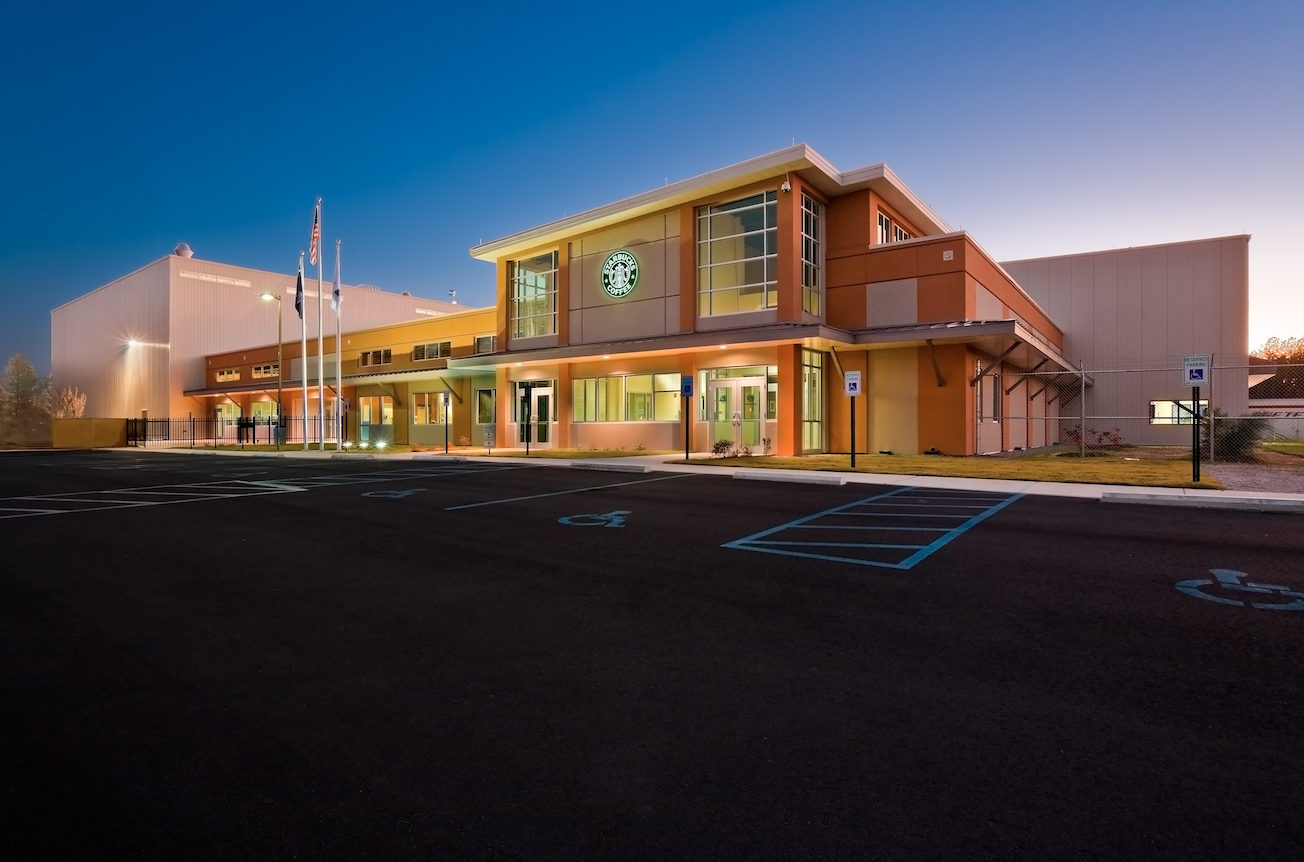When Starbucks engaged Stellar to design and build a soluble coffee manufacturing facility, they set the goal of creating the most functionally and technologically advanced plant in the United States. To say they achieved that objective might be an understatement, as the award-winning facility has set a new standard in the industry.
From food safety practices that adhere to the rigorous British Retail Consortium Food Safety Standard to features designed to meet LEED Gold certification requirements, the Starbucks soluble coffee plant in Augusta, Georgia, is a modern marvel. Nowhere are the facility’s many innovations more on display than on its processing and packaging line.
Innovative automation that took a year to perfect
What’s involved in taking soluble coffee processing to a whole new level? For Starbucks, it was more than a year of brainstorming, planning and designing a proprietary process for protecting the flavor of its VIA® products and ensuring that they live up to the brand’s high standards.
Ultimately, Starbucks and the Stellar team developed a processing and packaging line that has unique features in a number of areas, including:
1. Operational flexibility. The plant consolidates the processing work of three separate co-manufacturers’ plants into one adaptable system. One of the key design aspects is a creative configuration of valves and pipes that gives Starbucks tremendous flexibility regarding what product is produced by the line.
2. Nitrogen blanketing. Oxygen can have a negative impact on the quality and freshness of soluble coffee. To protect the product during processing, the company designed a closed-loop, oxygen-free processing system that blankets the coffee in nitrogen to preserve taste, texture and color.
3. Temperature control. After extraction, Starbucks controls the temperature of the product for the remainder of the process. No other soluble manufacturer goes to this length to ensure product quality.
4. High-performance, environmentally friendly roasting. The plant’s roasting systems deliver exceptional performance and flavor profile control, as well as reduced greenhouse gas emissions (levels of sulphur oxides, or SOx, and nitrogen oxides, or NOx) to comply with EPA Title V guidelines. This includes the use of regenerative thermal oxidizers (RTOs) that destroy exhaust coming out of the roasters.
5. Careful cooling. Coffee producers typically dump roasted beans onto a perforated steel plate for cooling. At the Augusta plant, however, beans are suspended individually in a stream of air to improve thermodynamic cooling performance and reduce bean breakage.
6. Advanced extraction. Existing extraction technology can be likened to a drip coffee maker, whereas the new technology Starbucks created is more like an espresso machine, with higher pressures at higher temperatures, allowing the extraction of more solids from the beans than previously possible.
7. Aroma recovery. Coffee processing produces both good and bad aromas and flavors. To create a pleasurable smell and taste for its soluble coffee, Starbucks developed a proprietary process that removes bitter and acidic odors and flavors and preserves those that are rich and robust.
8. Product concentration. Part of the soluble coffee production process involves creating a thick liqueur through both freezing and thermal concentration. The new plant uses specialized equipment with a unique geometry and design to be gentler on the product and preserve its flavor.
9. Spray drying. Rather than using the typical freeze drying process employed by soluble coffee processors, Starbucks chose to use a unique spray drying approach. In testing and adjusting the process, they increased the height of the spray dryer by 40 feet and developed a patented process of adding micro-grinded Turkish or Greek coffee grounds to give the product a mouth-feel similar to that of a French press.
10. Same-day packaging. Once the product is in powder form, packaging is performed that day. With Starbucks’ continuous processing approach, there are no open bins or powder storage. Coffee is entered into the packaging process within 12 hours of production for maximum freshness. What’s more, the packaging lines are so highly automated that manual intervention is only required to feed raw packaging materials into the lines.
A soluble coffee success story
By investing the time, effort and capital to develop an entirely new way to produce soluble coffee, Starbucks has revolutionized the industry. As they sip their morning cup, other soluble product producers are surely pondering how to leverage the company’s innovative thinking to elevate their own brands.
If you’d like to learn more about this project or innovative solutions for coffee processors, email me at foodforthought@stellar.net.




We are dealing with especially aroma recovery